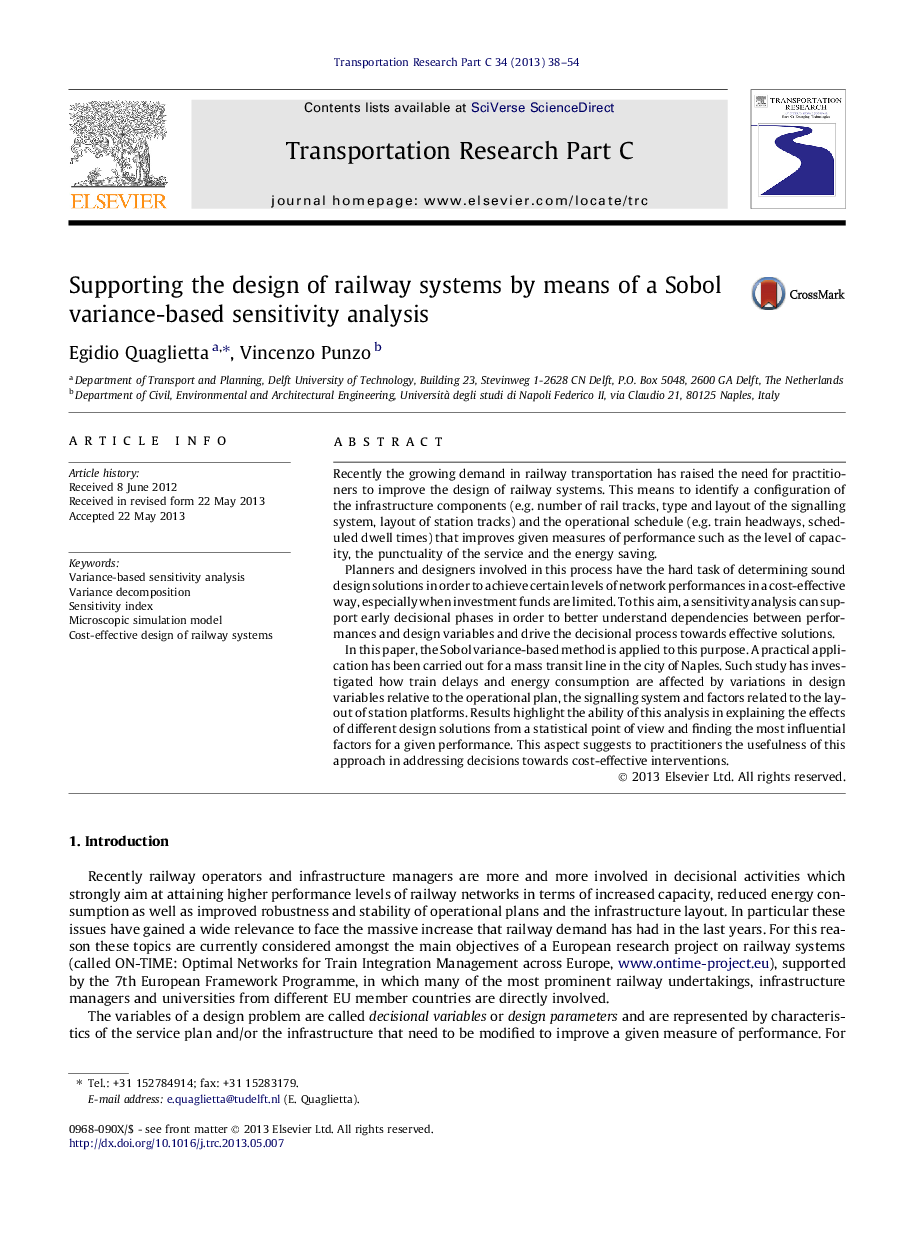| Article ID | Journal | Published Year | Pages | File Type |
|---|---|---|---|---|
| 525148 | Transportation Research Part C: Emerging Technologies | 2013 | 17 Pages |
•The Sobol analysis is used to reveal input–output relations for a railway network.•The effects of design solutions are explained from a statistical point of view.•Results confirm that train delays are affected by platform phenomena.•Changes in the timetable and the signalling system mostly affect energy consumption.•ETCS level 1 is more energy-robust than traditional multi-aspect systems.
Recently the growing demand in railway transportation has raised the need for practitioners to improve the design of railway systems. This means to identify a configuration of the infrastructure components (e.g. number of rail tracks, type and layout of the signalling system, layout of station tracks) and the operational schedule (e.g. train headways, scheduled dwell times) that improves given measures of performance such as the level of capacity, the punctuality of the service and the energy saving.Planners and designers involved in this process have the hard task of determining sound design solutions in order to achieve certain levels of network performances in a cost-effective way, especially when investment funds are limited. To this aim, a sensitivity analysis can support early decisional phases in order to better understand dependencies between performances and design variables and drive the decisional process towards effective solutions.In this paper, the Sobol variance-based method is applied to this purpose. A practical application has been carried out for a mass transit line in the city of Naples. Such study has investigated how train delays and energy consumption are affected by variations in design variables relative to the operational plan, the signalling system and factors related to the layout of station platforms. Results highlight the ability of this analysis in explaining the effects of different design solutions from a statistical point of view and finding the most influential factors for a given performance. This aspect suggests to practitioners the usefulness of this approach in addressing decisions towards cost-effective interventions.
